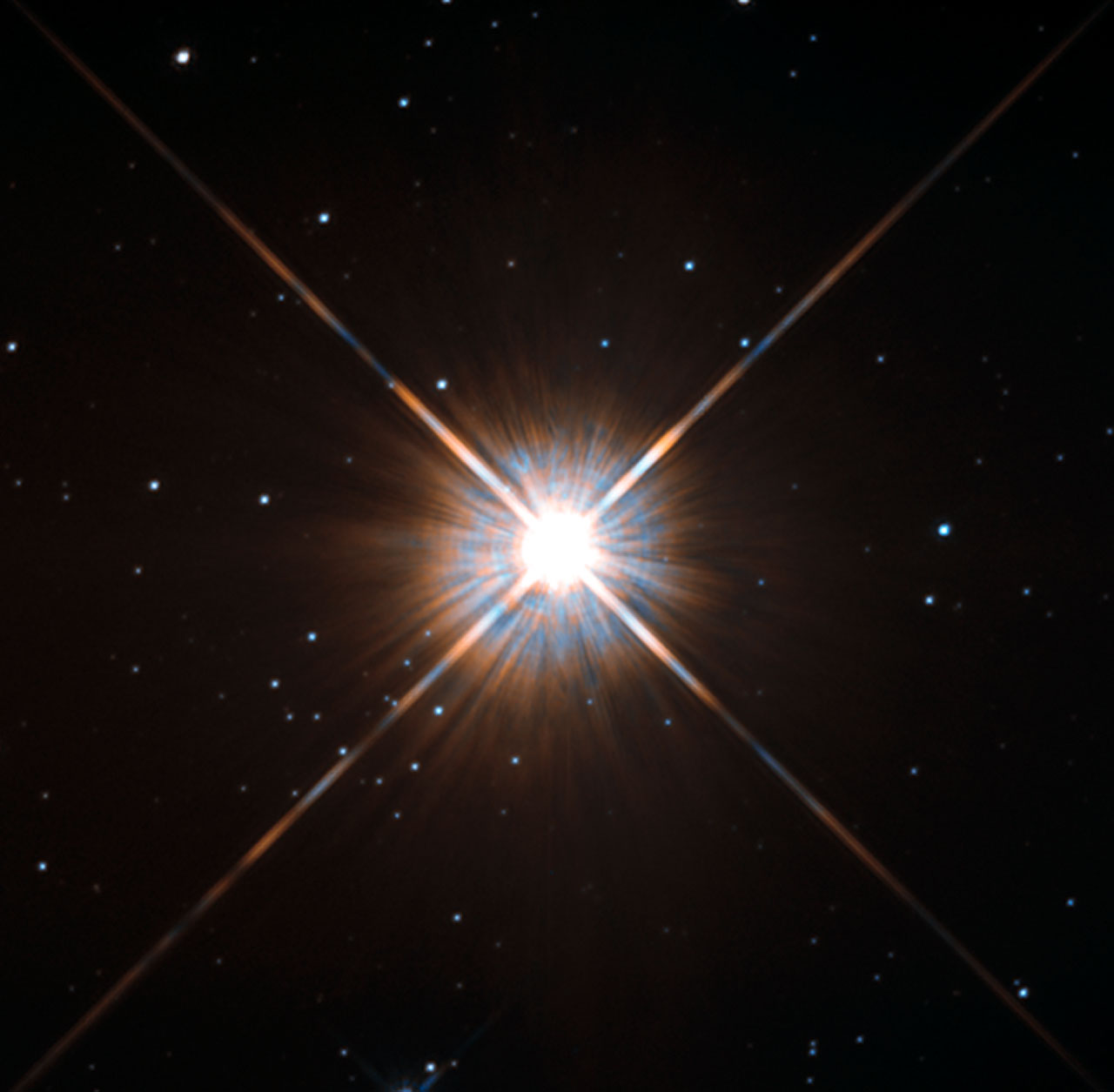Proxima Centauri is the nearest known star, at 4.227 ± 0.014 light-years from the Sun (and the Earth). Its visual luminosity is 0.00005510 ± 0.00000037 times that of the Sun. So it would take around 18,000 stars like Proxima Centauri to emit the visual light of just one star like the Sun! Of course, 18,000 stars like Proxima Centauri would contain about 2,000 times as much mass as the Sun, enough to make twenty stars like Eta Carina, whose bolometric luminosity (all-wavelenghts total luminosity) is more than a million times that of the Sun!hubblesite.org/newscenter wrote:
NOVEMBER 1, 2013: Proxima Centauri lies in the constellation of Centaurus (the Centaur), just over four light-years from Earth. Although it looks bright through the eye of the Hubble Space Telescope, as you might expect from the nearest star to the solar system, Proxima Centauri is not visible to the naked eye. Its average luminosity is very low, and it is quite small compared to other stars, at only about an eighth of the mass of the Sun. These observations were taken using Hubble's Wide Field and Planetary Camera 2 (WFPC2) in 1996. Proxima Centauri is actually part of a triple star system its two companions, Alpha Centauri A and B, lie out of frame.
I have tried to find out what filters were used for this image, but I have been unsuccessful. Proxima Centauri is definitely a reddish star, similar in color to Betelgeuse, with a B-V index of about +1.8.
(So how many stars like Proxima would it take to emit as much visual light as Betelgeuse? The answer to that question depends critically on how well we are able to measure the distance to and reddening of Betelgeuse, but if we assume that the refined Hipparcos distance to Betelgeuse is correct and that there is negligible reddening, it would take about 230,000,000 little red runts like Proxima to emit as much light as the red supergiant of Orion!)
Ann



